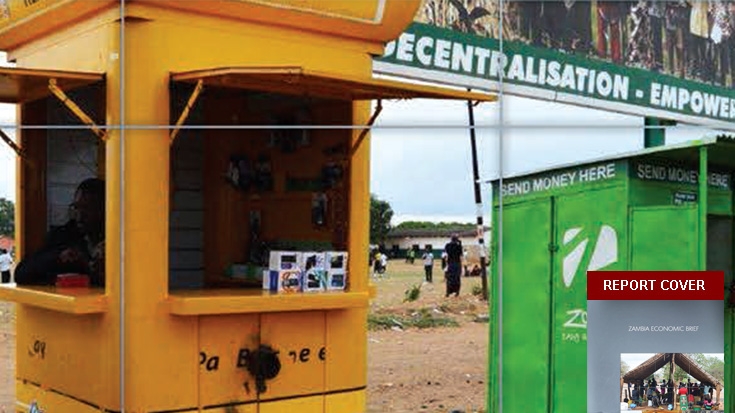In recent years, more Zambians like Mulenga have gained access to and now use quality financial services, but there is room for improvement as the country still lags behind its economic and geographic peers, according to a new World Bank study.
The country’s fourth economic brief, Financial Services: Reaching Every Zambian, shows that although commercial banks, micro-lenders and mobile phone transfer facilities exist, of the 62% of adults who own a mobile phone, only 5% of them use it to pay bills or receive money. This is far lower than the average of 16% in Sub-Saharan Africa, the report says.
Kundavi Kadiresan, World Bank country director for Zambia, said the main obstacle to financial inclusion is the high cost of formal banking services due to the small size of the banking sector.
“Other factors includes high interest rates, fees and other costs of banking, which exclude a considerable size of the population such as women the less educated, youth, the poor, and rural residents are the least likely to have a formal account,” she said. “The gap between urban and rural residents is wide.”
While 36% of adults in Zambia’s urban areas have a bank account, only 17% in rural areas have one, according to the report, and women are far less likely than men to have a formal account. In addition, the concentration of these services in urban areas means that a considerable section of the population is cut off, because the majority live in rural areas, the report says, and most Zambians rely on family or friends to borrow or send money. Additional findings include:
- Some banks have introduced low-fee accounts that are proving popular, but have not been broadly introduced
- Government payments can play a catalytic role in providing volume and scale in rural area for financial service providers
- Zambia’s economy is expected to grow around 6% in 2014, slower than the 6.7 % in the previous two years
- Average inflation this year is expected to be around 7.8% higher than the targeted 6.5% and the average 2013 average of 7%
- Changes to the mining tax proposed in the 2015 budget and the outstanding value-added tax (VAT) refunds need to be resolved soon as these issues could have an adverse impact on investment.
